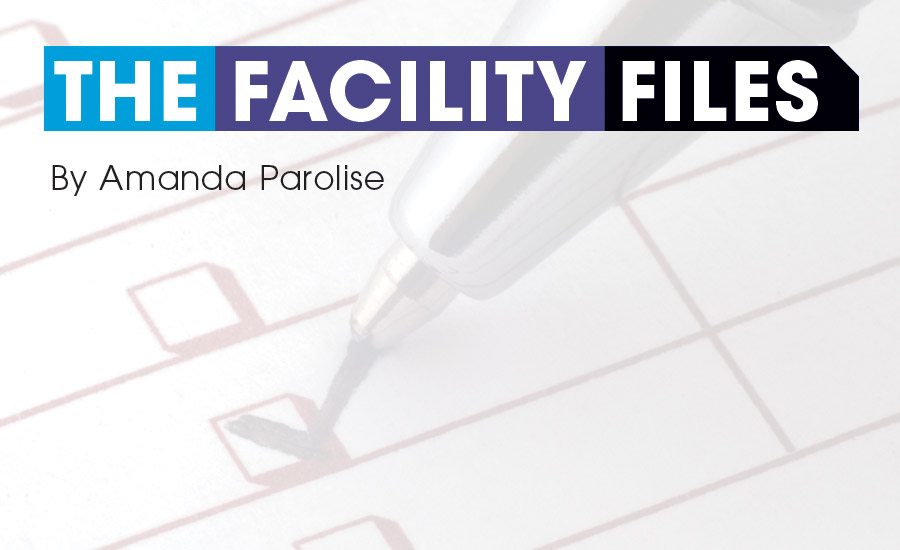This month’s Facility File will focus on the B2B March test for an existing three-story private office building energy retrofit. The project delivery method is design-build, with a guaranteed turnkey cost so the D-B firm will assign a project manager with an energy management background to the project along with in-house HVAC and BAS engineers, technicians, and estimator staff to be involved in the design and cost estimate initial phase. The scope of work will be a basis of design to meet the owner’s HVAC and electrical system requirements, utility company’s requirements, and the O&M requirements.
It would be very beneficial for the building owner and her owner representative to read ASHRAE Handbook 2015 Applications and read chapters 3 (Commercial and Public Buildings), chapters 36 through 43 (Building Operations and Management), chapter 59 (HVAC security), and chapter 63 on codes and standards to be knowledgeable of ASHRAE’s guidelines when preparing to authorize a design-build (D-B) firm to replace the building hot water boilers.
This information, combined with the owner’s own knowledge of outsourcing the O&M of a commercial office building, will assist the D-B team in understanding intricacies of owning, operating, and managing this type of HVAC application. It is also a requirement that the D-B team coordinate the basis of design document with the building owner’s security manager and to contribute to a safer building energy management design.
In the initial D-B phase of the project, the owner representative will begin the process of outsourcing the building’s O&M by soliciting a request for proposal and receipt of bids that will be reviewed by the owner, owner representative, and D-B firm’s project manager.
The owner will require the D-B firm to provide a one-year, full O&M of the new boiler installation including the monitoring, trending, and reporting on unit manufacturer’s self-contained BAS performance to document system performance and to share this information with the utility company contributing to this project. The necessary energy data collection shall be inputted into a report submission to the utility company project representative. The D-B off-site operation shall be the tracking of daily boiler retrofit performance and on-site BAS equipment/system calibration while providing quarterly training to the O&M staff in the first year.
In the startup and pre-commissioning phases, the outsourced O&M staff will begin their on-site maintenance management contract and will be proactive in following along with the D-B’s HVAC design engineer to receive equipment, system, and computer training using the O&M manuals and contract documents (that will eventually become the as-built drawings). The project owner representative shall have his TAB consulting engineer work with the D-B firm to adjust and balance the hot water flow through the boilers and the primary-secondary under each sequence of operation.
| Once the startup has been completed, the boiler technician and the O&M staff shall go through the boiler control initial dry-run functional performance test (FPT) demonstration prior to the D-B team demonstrating the system to the owner representative and the 3rd-party commissioning consultant. The boiler technician will begin collecting system performance by trending pertinent HVAC system and equipment data by trending the following: |
| [X] outdoor air dry bulb and wet bulb temperature [X] indoor air dry bulb and wet bulb temperature [X] energy meters [X] control points at each new boiler [X] primary and secondary hot water heating supply and return temperature [X] control points at each boiler [X] alarms [X] security points |
| Taking the same approach as the owner representative, the owner’s O&M personnel should use a series of computer generated touchscreen project checklists that allows his staff to confirm that the following facility data has been collected. This process should start at the beginning of construction and not at project closeout so that the facility files can be inputted into the outsourced O&M CMMS system. Touchscreen O&M checklists should include: |
| [X] equipment shop drawings [X] O&M manuals, parts list, and lubricants [X] troubleshooting tips [X] seasonal startup and shutdown instructions |
| The O&M staff should review the D-B firm’s TAB system flow diagrams and boiler terminal points, field equipment panels, and contract drawings and specification prior to fabrication. Touchscreen service checklists should include: |
| [X] control points and ATC valves [X] access to this equipment and associated pumps. |
| The training process should include specific HVAC and BAS system and equipment training but also emergency and security plan training due to the HVAC security (e.g., gas leak). Training should also include the work order system to routinely assure proactive, planned maintenance. This will require the D-B firm to provide the energy reports along with the associated system flow diagrams noting set points versus actual and adjustment as part of the project closeout documents. Touchscreen training checklists should include: |
| [X] equipment [X] system [X] emergency plan [X] automatic controls [X] energy management |


